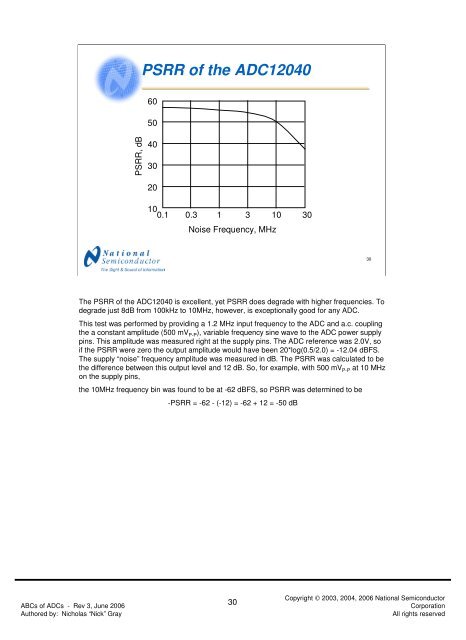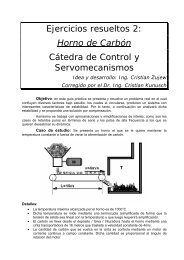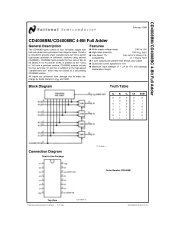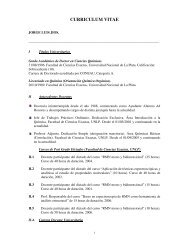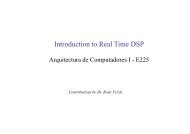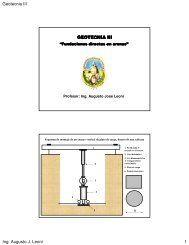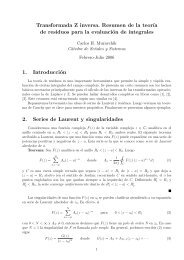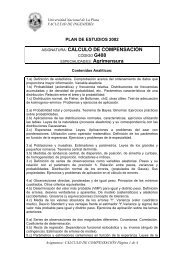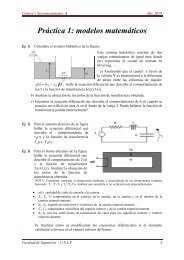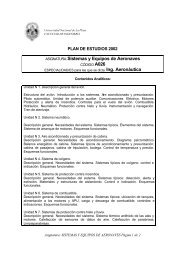ABCs of ADCs - Analog-to-Digital Converter Basics (PDF)
ABCs of ADCs - Analog-to-Digital Converter Basics (PDF)
ABCs of ADCs - Analog-to-Digital Converter Basics (PDF)
Create successful ePaper yourself
Turn your PDF publications into a flip-book with our unique Google optimized e-Paper software.
PSRR <strong>of</strong> the ADC120406050PSRR, dB403020100.1 0.3 1 3 10 30Noise Frequency, MHz30The PSRR <strong>of</strong> the ADC12040 is excellent, yet PSRR does degrade with higher frequencies. Todegrade just 8dB from 100kHz <strong>to</strong> 10MHz, however, is exceptionally good for any ADC.This test was performed by providing a 1.2 MHz input frequency <strong>to</strong> the ADC and a.c. couplingthe a constant amplitude (500 mV P-P ), variable frequency sine wave <strong>to</strong> the ADC power supplypins. This amplitude was measured right at the supply pins. The ADC reference was 2.0V, soif the PSRR were zero the output amplitude would have been 20*log(0.5/2.0) = -12.04 dBFS.The supply “noise” frequency amplitude was measured in dB. The PSRR was calculated <strong>to</strong> bethe difference between this output level and 12 dB. So, for example, with 500 mV P-P at 10 MHzon the supply pins,the 10MHz frequency bin was found <strong>to</strong> be at -62 dBFS, so PSRR was determined <strong>to</strong> be-PSRR = -62 - (-12) = -62 + 12 = -50 dB<strong>ABCs</strong> <strong>of</strong> <strong>ADCs</strong> - Rev 3, June 2006Authored by: Nicholas “Nick” Gray30Copyright © 2003, 2004, 2006 National Semiconduc<strong>to</strong>rCorporationAll rights reserved


